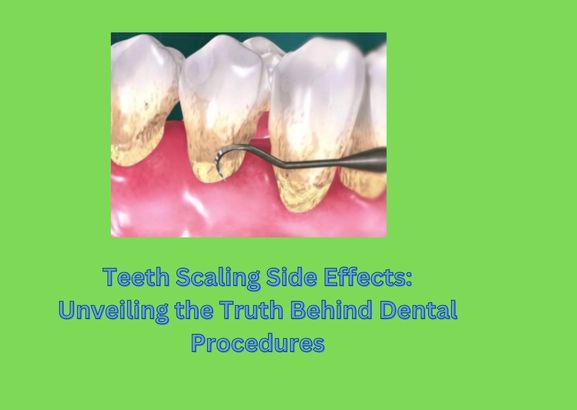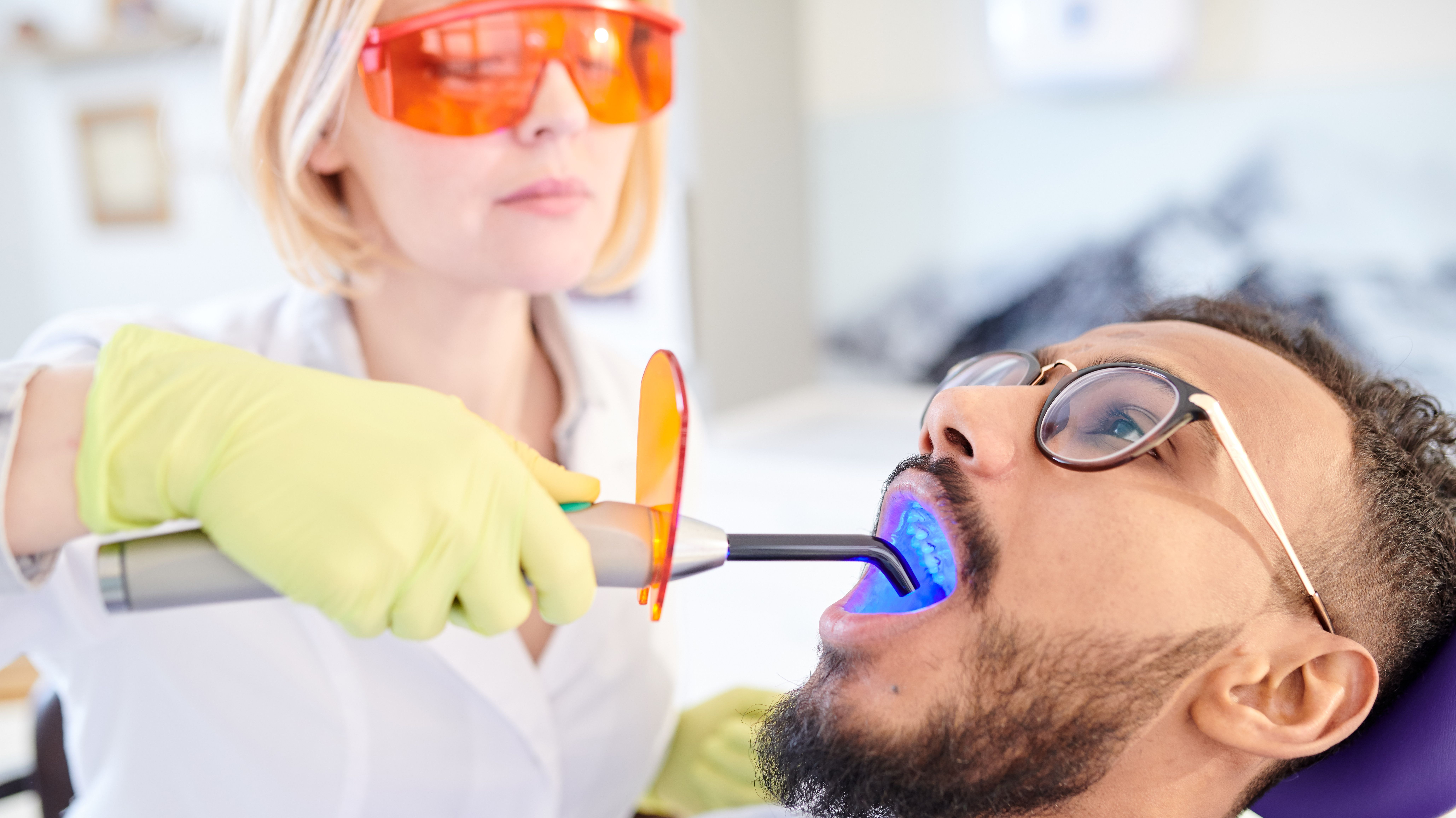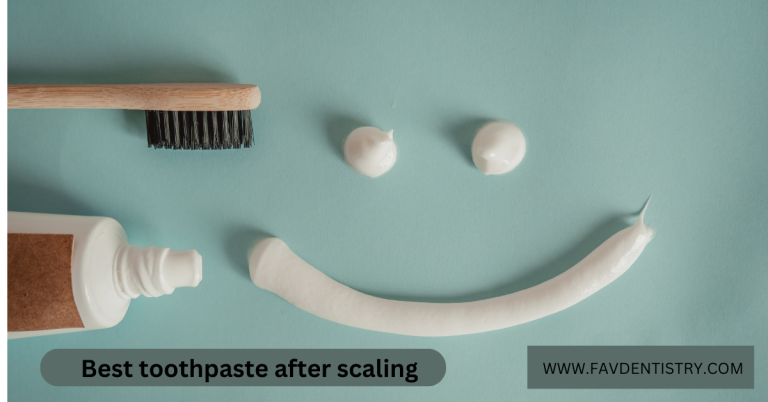How to Keep Teeth White After Whitening: Expert Tips for Long-lasting Results
Last Updated on 6 months by DR. ALBIN SIPES
To keep teeth white after whitening, avoid foods and drinks that can stain teeth and maintain good oral hygiene practices. Having white teeth after a whitening treatment is a goal for many individuals.
However, maintaining that brightness requires a combination of good habits and choices. After undergoing teeth whitening, it is important to be mindful of the foods and drinks that can stain teeth, such as coffee, tea, red wine, and dark-colored berries.
Avoiding smoking and chewing tobacco is also crucial. Additionally, practicing good oral hygiene like brushing and flossing regularly and visiting the dentist for regular check-ups can help keep teeth white and healthy. By making these small lifestyle adjustments, you can enjoy the benefits of whiter teeth for longer periods.
Common Causes Of Tooth Discoloration
Whitening your teeth can give you a brighter, more confident smile. But keeping those pearly whites shining requires some effort. In this section, we’ll explore the common causes of tooth discoloration and how you can prevent it. Let’s dive in and learn how to maintain that beautiful white smile!
Consumption Of Staining Substances
- Some foods and beverages can stain your teeth, such as coffee, tea, red wine, and dark-colored fruits and sauces.
- Smoking and tobacco use can also lead to tooth discoloration.
- Limiting your intake of these staining substances can help prevent further discoloration.
Poor Oral Hygiene Habits
- Neglecting your oral hygiene routine can contribute to tooth discoloration.
- Inadequate brushing and flossing allow plaque and stains to accumulate on your teeth.
- Regular brushing, flossing, and rinsing with an antibacterial mouthwash can help remove surface stains and maintain your teeth’s whiteness.
Aging And Natural Tooth Yellowing
- As we age, our teeth naturally become more yellow. This is because the enamel, the outer layer of our teeth, thins over time, revealing the dentin underneath, which is naturally yellow in color.
- In addition to aging, factors such as genetics and certain medical conditions can also contribute to tooth discoloration.
- While it’s impossible to prevent the natural yellowing of teeth, there are steps you can take to minimize the effects and keep your teeth as white as possible.
Remember, proper oral hygiene and lifestyle choices play a crucial role in maintaining your teeth’s whiteness. By avoiding staining substances, practicing good oral hygiene habits, and understanding the natural aging process of our teeth, you can keep your smile bright and beautiful for years to come.
Choosing The Right Whitening Method
Keeping your teeth white after whitening is essential to maintain a bright and healthy smile. One of the key aspects of achieving lasting results is choosing the right whitening method. Whether you opt for professional whitening at the dentist’s office or decide to use at-home whitening kits and products, understanding the benefits and considerations of each option is imperative.
Let’s explore both methods in detail to help you make an informed decision.
Professional Whitening At The Dentist’S Office:
- Dentist-administered whitening treatments offer immediate and noticeable results.
- The dentist uses professional-grade whitening agents that are strong and effective.
- The procedure is done under professional supervision, ensuring safe and optimal results.
- Customized trays or laser treatments may be used for personalized whitening.
- Dentists can address any existing dental issues before whitening to ensure the best outcome.
At-Home Whitening Kits And Products:
- At-home kits provide convenience and flexibility, allowing you to whiten your teeth at your own pace.
- Whitening strips, gels, and pens are popular options for home use.
- These products usually contain a lower concentration of whitening agents compared to professional treatments.
- It may take longer to achieve desired results compared to in-office treatments.
- Some products may cause tooth sensitivity, so it’s important to follow instructions and use them as recommended.
Remember, when choosing a whitening method, it is essential to consider your personal preferences, budget, and dental health. Consulting with your dentist before beginning any whitening regimen is recommended to ensure you select the most suitable option for your needs.
With the right approach, you can maintain a radiant smile that lasts.
Pre-Whitening Dental Care
***pre-whitening dental care***
Before undergoing a teeth whitening treatment, it is crucial to prioritize pre-whitening dental care. By properly caring for your teeth leading up to the whitening process, you can enhance the effectiveness and longevity of the results. Here are some key points to consider:
Regular Dental Check-Ups And Cleanings:
- Schedule routine dental check-ups and cleanings with your dentist. This ensures that any underlying dental issues or concerns are addressed before starting the whitening process.
- Regular cleanings help remove surface stains and tartar buildup, making your teeth more responsive to whitening treatments.
- Dentists can also identify and treat any cavities or gum issues that may hinder the whitening process.
Addressing Any Dental Issues Or Concerns:
- If you have any dental issues like tooth decay, gum disease, or tooth sensitivity, it is essential to address them before whitening your teeth.
- Treating these issues beforehand reduces the risk of complications during or after the whitening process.
- Consult with your dentist to determine the best course of action for addressing specific concerns.
Proper Brushing And Flossing Techniques:
- Brush your teeth at least twice a day using a soft-bristled toothbrush. Use gentle, circular motions to clean all surfaces of your teeth and gums.
- Floss daily to remove plaque and food particles trapped between your teeth. This helps prevent staining and promotes overall dental health.
- Choose a toothpaste that contains fluoride to strengthen your enamel and protect against tooth decay.
- Consider using a whitening toothpaste to help maintain the brightness of your teeth post-whitening.
By following these pre-whitening dental care practices, you are setting yourself up for success in achieving and maintaining a bright, white smile. Prioritize regular dental check-ups, address any concerns or issues, and maintain proper oral hygiene for the best whitening results.
Establishing A Consistent Oral Hygiene Routine
Maintaining a white and bright smile after teeth whitening is all about establishing a consistent oral hygiene routine. By incorporating simple yet effective practices into your daily routine, you can ensure that your teeth stay pearly white for longer. Here are some key habits to include in your oral care regimen:
Brushing At Least Twice Daily With Whitening Toothpaste
- Brush your teeth at least twice a day, once in the morning and once before bed, using a whitening toothpaste. This helps remove surface stains and prevents plaque buildup.
- Ensure you brush your teeth gently in circular motions for about two minutes to cover all areas thoroughly.
- Pay attention to hard-to-reach areas such as the back molars and the gum line, as these are often neglected and more prone to stains.
- Rinse your mouth thoroughly with water after brushing to remove any residual toothpaste or debris.
Flossing Regularly To Remove Plaque And Stains
- Flossing is an essential step in maintaining white teeth as it helps remove plaque and food particles between teeth that brushing alone may miss.
- Make it a habit to floss at least once a day, preferably before bedtime, to eliminate any remaining plaque or stains from food or beverages.
- Use a gentle back-and-forth motion and curve the floss against each tooth to effectively clean the sides.
- Be sure to reach the gum line and clean between every tooth, including the back molars.
By sticking to a consistent oral hygiene routine that includes brushing with whitening toothpaste and regular flossing, you can keep your teeth white and dazzling for a long time to come. Remember, the key is consistency, so make these habits an integral part of your daily life.
Avoiding Staining Substances And Habits
Keeping your teeth white after whitening is essential to maintain that beautiful, bright smile you’ve worked so hard to achieve. One of the most important ways to do this is by avoiding staining substances and habits. In this section, we will discuss two major culprits: coffee, tea, and red wine consumption, and smoking or tobacco use.
Limiting Consumption Of Coffee, Tea, And Red Wine
- These beverages contain chromogens, which are pigmented compounds that can adhere to your teeth and cause staining.
- Consider reducing your consumption of these drinks or using a straw to minimize contact with the teeth.
- Rinse your mouth with water after consuming coffee, tea, or red wine to wash away any potential staining agents.
- Opt for teeth-friendly alternatives like herbal tea or white wine, which are less likely to discolor your teeth.
Quitting Smoking And Tobacco Use
- Smoking and tobacco use not only have detrimental effects on your overall health but can also significantly stain your teeth.
- The tar and nicotine present in cigarettes can leave dark, unsightly stains on your pearly whites.
- Quitting smoking or tobacco use is not only beneficial for your dental health but for your overall well-being as well.
- Consult your dentist or seek professional help to quit smoking and maintain a healthy, white smile.
By limiting your consumption of coffee, tea, and red wine, as well as quitting smoking and tobacco use, you can take significant steps towards prolonging the effects of teeth whitening and keeping your smile radiant. Remember, practicing good dental hygiene, such as regular brushing and flossing, is also crucial in maintaining pearly whites.
Embrace these habits for a long-lasting, confident smile that will dazzle everyone you meet.
Choosing The Right Diet For White Teeth
Having just completed a teeth whitening treatment, you’re probably wondering how to maintain those pearly whites for as long as possible. One key aspect to consider is your diet. Yes, what you eat and drink can greatly impact the color of your teeth.
But fear not! With a few simple adjustments to your meals and beverages, you can ensure that your teeth stay sparkling white for longer. We will explore the importance of choosing the right diet for white teeth and provide some practical tips to help you maintain your dazzling smile.
Incorporating Tooth-Friendly Foods And Beverages
Maintaining the whiteness of your teeth goes beyond just avoiding certain foods. It also involves incorporating tooth-friendly options into your diet. Here are some key points to keep in mind:
- Crunch on fruits and vegetables: Opt for crisp, fibrous fruits and vegetables like apples, carrots, and celery. Chewing on these natural abrasives stimulates saliva production and helps remove surface stains from your teeth.
- Choose dairy products: Cheese and yogurt are not only delicious but also beneficial for your teeth. These dairy products contain calcium and casein, both of which promote strong enamel and help prevent tooth decay.
- Drink plenty of water: Water should always be your beverage of choice, as it not only keeps you hydrated but also helps wash away food debris and minimize staining.
Avoiding Highly Acidic Or Pigmented Foods
While incorporating tooth-friendly foods is important, it is equally crucial to avoid highly acidic or pigmented foods that can stain your teeth. Here are a few pointers to consider:
- Limit your intake of sugary foods and drinks: Sugar can contribute to the growth of bacteria in your mouth, leading to cavities and discoloration. Try to reduce your consumption of sugary treats and opt for sugar-free alternatives instead.
- Steer clear of highly pigmented foods: Foods and beverages like berries, coffee, tea, and red wine contain pigments that can seep into your enamel, causing stains over time. It’s best to minimize your intake of these items or rinse your mouth with water after consuming them.
- Be cautious with acidic foods: Acidic foods, such as citrus fruits, tomatoes, and vinegar, can erode your enamel, making your teeth more susceptible to staining. Enjoy these foods in moderation and consider using a straw to minimize contact with your teeth.
By incorporating tooth-friendly foods into your diet and avoiding highly acidic or pigmented foods, you can help maintain the whiteness of your teeth long after undergoing a whitening treatment. Remember, good oral hygiene practices such as regular brushing and flossing, along with routine dental check-ups, are also key to keeping your teeth healthy and white.
So, go ahead and enjoy your favorite foods while ensuring that your radiant smile stays picture-perfect!
Using Whitening Products Sparingly And Correctly
Is essential to maintaining a bright and white smile after undergoing a teeth whitening treatment. While you may be tempted to continue using whitening products frequently to ensure lasting results, it’s important to understand the potential risks of over-whitening. To help you navigate this process effectively, below are some key points to keep in mind:
- Implementing touch-up treatments as needed: After your initial teeth whitening treatment, it’s natural for some discoloration to occur over time due to factors like aging, consumption of staining foods and beverages, and smoking. To combat this, consider implementing touch-up treatments as needed. This can help you maintain your desired level of whiteness without the need for excessive product usage.
- Understand the potential risks of over-whitening: While teeth whitening can significantly enhance the appearance of your smile, it’s important to be aware of the potential risks associated with over-whitening. Excessive use of whitening products can lead to tooth sensitivity, gum irritation, and even enamel damage. It’s crucial to follow the instructions provided by your dentist or the product manufacturer to avoid these risks.
- Make sure to use products correctly: When using whitening products, it’s crucial to follow the instructions carefully to ensure safe and effective results. This includes avoiding excessive use, applying the product only to your teeth and not your gums, and adhering to the recommended treatment duration. Additionally, consider consulting with your dentist before trying any new whitening products to ensure they are suitable for your specific needs.
By using whitening products sparingly and correctly, you can maintain a dazzling white smile without compromising the health of your teeth and gums. Remember to implement touch-up treatments as needed, understand the potential risks of over-whitening, and always follow the instructions provided.
With proper care and the right approach, you can enjoy long-lasting whitening results and keep your smile shining bright.
Frequently Asked Questions Of How To Keep Teeth White After Whitening
How Long Should I Wait After Whitening My Teeth To Eat Or Drink?
It is recommended to wait at least 30 minutes after whitening your teeth before eating or drinking anything. This allows the whitening agent to set and prevents staining or discoloration.
Can I Drink Coffee Or Tea After Whitening My Teeth?
It is best to avoid consuming coffee or tea immediately after whitening your teeth. These beverages can stain your teeth and counteract the whitening effects. If you must drink them, use a straw to minimize contact with your teeth.
How Often Should I Touch Up My Whitening Treatment?
The frequency of touch-ups depends on individual factors such as diet and oral hygiene habits. As a general guideline, you may need touch-ups every 6 to 12 months to maintain the desired level of whiteness.
Should I Continue My Regular Oral Hygiene Routine After Whitening My Teeth?
Absolutely! After whitening your teeth, it is important to continue practicing good oral hygiene. This includes brushing twice a day, flossing regularly, and visiting your dentist for cleanings and check-ups to keep your teeth healthy and maintain their whiteness.
Can I Use Whitening Toothpaste After A Professional Whitening Treatment?
Using whitening toothpaste after a professional whitening treatment can help maintain the whiteness of your teeth. However, be cautious as some whitening toothpastes can be abrasive and may cause tooth sensitivity. Consult with your dentist for recommendations.
Conclusion
Maintaining a bright, white smile after whitening your teeth is essential to prolong the results and prevent discoloration. By implementing a proper oral hygiene routine and making a few lifestyle changes, you can enjoy a beautiful smile for longer. Brushing your teeth at least twice a day with a whitening toothpaste helps remove surface stains and prevent plaque buildup.
Flossing regularly also contributes to keeping your teeth white by removing food particles that can cause discoloration. It’s important to avoid or limit consumption of stain-causing foods and beverages such as coffee, tea, and red wine. Additionally, using a straw when drinking these beverages can help minimize their contact with your teeth.
Quitting smoking also makes a significant difference in maintaining a white smile. Regular dental check-ups and professional cleanings are essential for keeping your teeth white and healthy. By following these tips, you can enjoy a radiant, white smile long after your whitening treatment.



